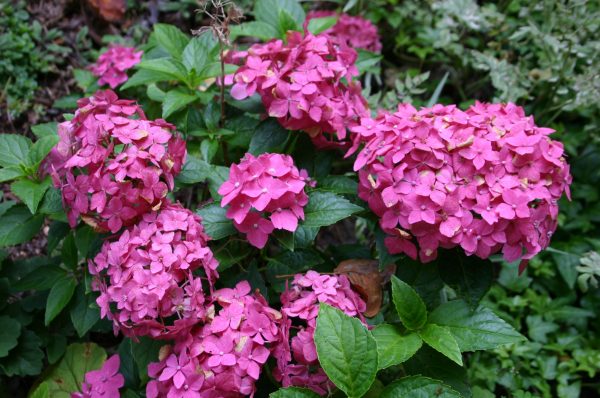Soil Testing – Using Gypsum

A couple of weeks ago I wrote about the importance of soil testing and the role of pH in plant health. I gave instructions on how to collect a soil sample and have it tested. In the days following, several questions came in asking for clarification or further information.
The questions are good ones. Let’s deal with them one at a time.
M.H. wrote, “After building some walls in the basement I had several pieces of Sheetrock(tm) wallboard left over. As you know, wallboard is made from gypsum (calcium sulfate). Garden lime is calcium carbonate. I wondered if I could till the wallboard into the soil to lower the acidity instead of buying lime?”
Although calcium sulfate and calcium carbonate do seem like similar chemicals, in the soil they act differently. It is the sulfate and the carbonate parts of the molecules that have the potential to decrease the acidity of the soil. It turns out that carbonate combines with positively charged hydrogen ions set loose by calcium to form carbon dioxide and water. Both of those substances migrate out of the soil, taking the hydrogen ions with them. It is the loss of hydrogen ions that causes soil pH to rise, i.e. for the soil to become less acid.
Conversely, sulfate does not participate in any soil reactions, nor does it carry any hydrogen ions away. Therefore, adding calcium sulfate (gypsum wallboard) doesn’t affect soil pH.
Sorry!
On the other hand, most gardeners have likely heard claims that gypsum can be added to clay soil in order to soften it and make it more tillable. This is perfectly correct if and ONLY if the soil has lots of sodium in it. We have lots of clay in Georgia but, unfortunately for the gypsum folks, our soil does not have much sodium present. You can add as much gypsum as you like and it will have little effect on your soil shoveling labors.
J.C. asks, “I wonder if you could add gypsum and sodium to soil to soften it. Will it cause problems if you try to soften the soil this way?”
I confused things didn’t I?
My point is that naturally sodic soil, which can be terribly hard and compacted, can be softened with gypsum…..not that you could add sodium and gypsum to soil in order to soften it.
Out in Monroe, E.D. was curious if the calcium sulfate in wallboard could be used to add calcium to his soil to counteract blossom end rot on his tomatoes. This question has a better prognosis!
Blossom end rot is aptly named. Your tomato can appear perfect from above but, when you grasp it for harvest, the bottom end is a black, gooey mess: blossom end rot.
Blossom end rot is caused by a lack of calcium in the fruit just after pollination. Tomatoes, plus squash, watermelon and other fruits, have a hard time moving calcium to their young fruit. Vigorously growing plant leaves steal the calcium away, causing blossom end rot unless there is plenty of calcium to go around in the plant’s tissue.
The disease can be thwarted by keeping the soil evenly moist.
C.D. says that three years ago she planted some ‘Forever Pink’ hydrangeas. In the intervening years the blooms have turned more purple than pink.
Her’s is a perfect example of how soil pH affects a plant. The hydrangeas are changing color because her soil has gradually become more acidic. In acid soil, the aluminum that causes hydrangea blooms to be blue is chemically available to the plant. As the soil pH went down, the available aluminum caused pink flowers to become purple. All Carole has to do is to raise the soil pH, making it more alkaline.
How? By mixing a cup of hydrated lime (not garden lime) in five gallons of water and sprinkling the area around each plant with this solution. Each plant should receive three to five gallons. The hydrated lime (available in small bags from garden centers) will raise the pH quickly, perhaps “pinkening” her flowers this summer. Hydrated lime is only a short-term solution though. Carole should scatter a cup of garden lime around each plant every year to keep the pH raised for the future.
Relate these cautionary tales to your teenagers. Perhaps they will be less likely to sleep through their science classes if they see there IS a practical reason to learn about soil chemistry.











